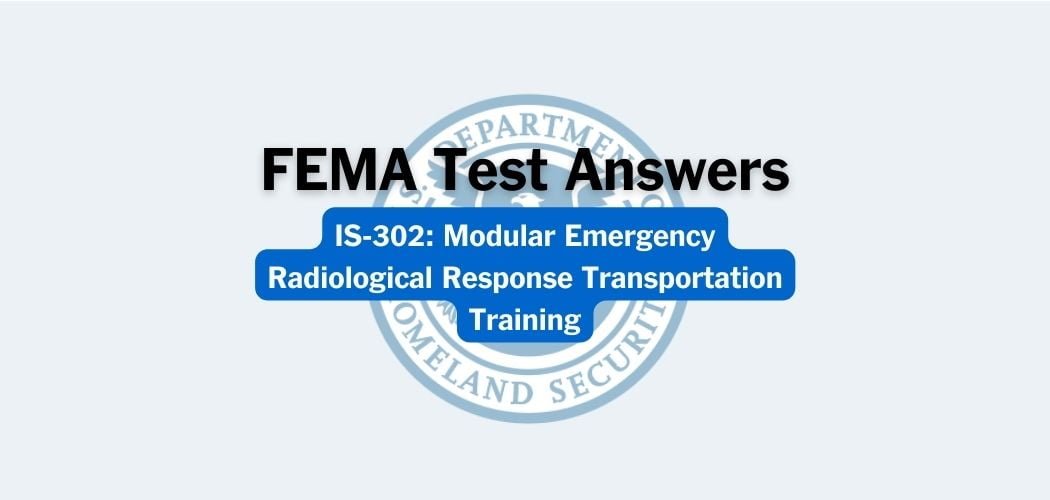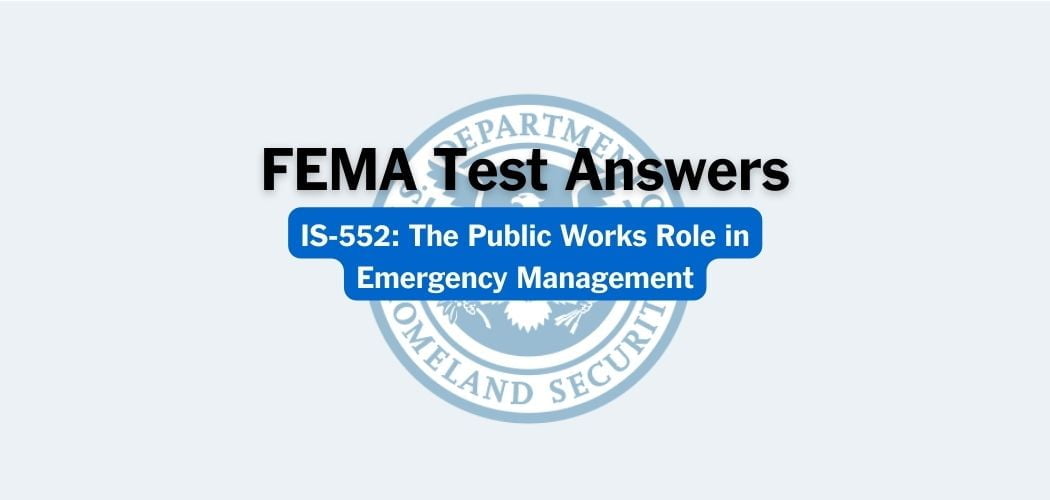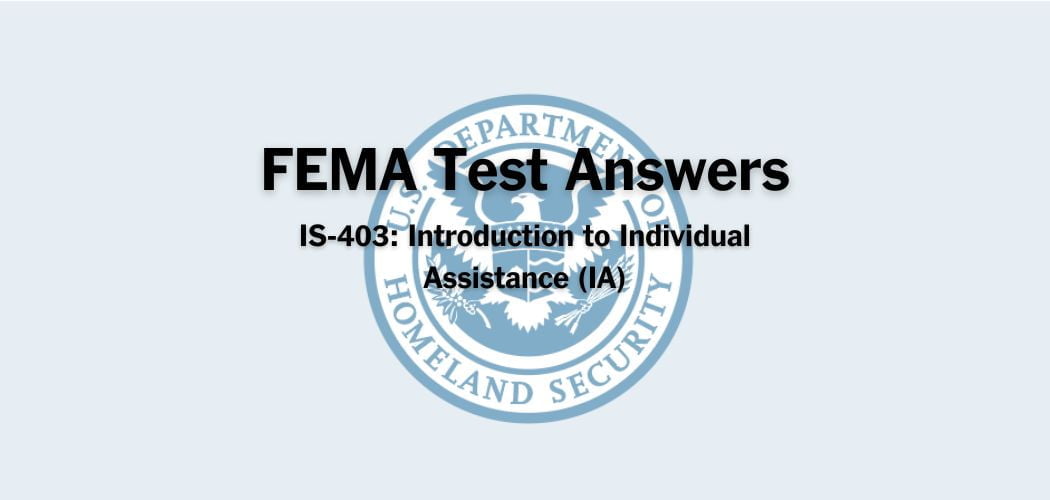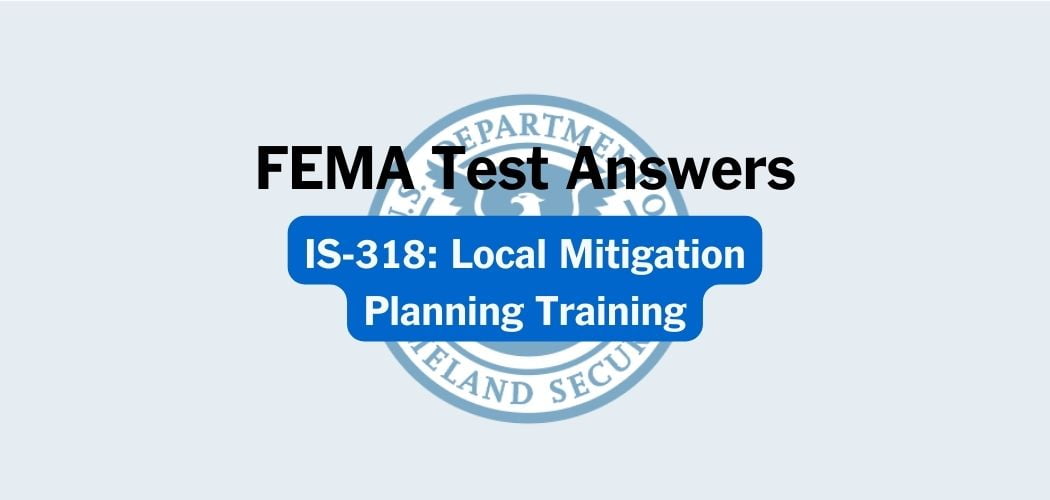Overview: The FEMA IS-329.A course was updated on 2/2/2024 to provide state officials an opportunity to understand the policies and procedures for updating State Hazard Mitigation Plans, and effectively use the planning process to advance mitigation.
Primary audience: FEMA IS-329.A is for State Hazard Mitigation Officer (SHMO), State Management Agency Staff, mitigation advisory committee members, and non-governmental agency stakeholders.
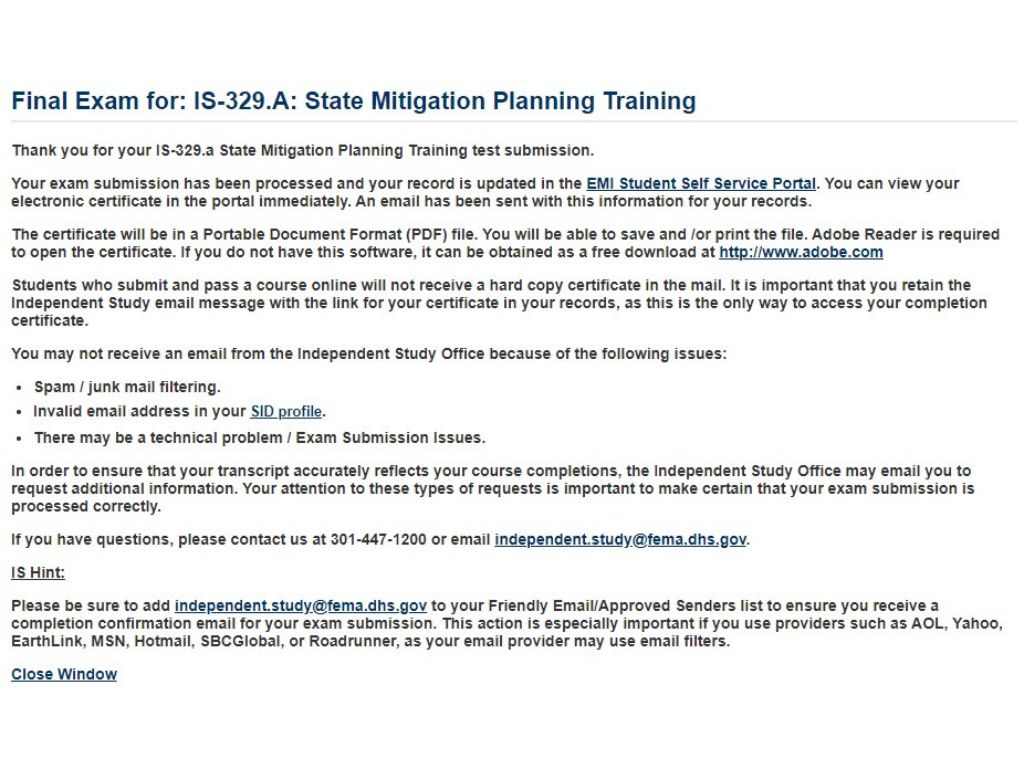
FEMA IS-329.A test answers
Note: Each time this test is loaded, you will receive a unique set of questions and answers. The test questions are scrambled to protect the integrity of the exam.
Question 1. Which of the following is a hazard mitigation action category?
A. Public Assistance
B. Structure and infrastructure Projects✅
C. Preparedness
D. Individual Assistance
Question 2. Which of the following is NOT a general step in the planning process?
A. Develop the mitigation strategy.
B. Assess risks and capabilities.
C. Adopt and implement the plan.
D. Hold biweekly planning meetings.✅
Question 3. Which of the following statements is NOT true?
A. States are responsible for providing technical assistance / training to local governments in applying for HMA planning grants and mitigation planning.
B. States are responsible for the review of local and tribal (as applicable) mitigation plans before submitting them to FEMA for approval.
C. States are responsible for updating and submitting state hazard mitigation plans to FEMA for approval every 5 years.
D. States that have enhanced status do not have to send local mitigation plans to FEMA for review.✅
Question 4. The state plan must provide a summary of the changes in development that have occurred and are projected in hazard-prone areas. Which of the following would NOT be considered in documenting changes in development?
A. Changes in land use and built development
B. Changes in elected officials✅
C. Changes to the vulnerability of state-owned or operated buildings, infrastructure and critical facilities
D. Changes in population
Question 5. A requirement of the state plan is to identify current and potential sources of funding to implement mitigation actions and activities. Which of the following funding sources is a FEMA mitigation funding source?
A. Hazard Mitigation Grant Program✅
B. Collaborative Forest Landscape Restoration Program
C. EPA Multipurpose Grants to States and Tribes
D. Watershed and Flood Prevention Operations Assistance Program
Question 6. Which of the following is a characteristic of an enhanced state/plan under 44 CFR §201.5?
A. The state is capable of managing increased funding to achieve its mitigation goals.✅
B. The state has a limited mitigation program.
C. An approved enhanced plan entitles the state to receive faster disaster declarations.
D. State enhanced plans have a 10-year performance period.
Question 7. Which of the following is a component of an enhanced plan review?
A. National Planning Review Panel: If all plan elements are met, the FEMA region staff submits the enhanced plan to FEMA headquarters for a review by the National Review Panel.✅
B. EPA Courtesy Review: Plan elements are reviewed for alignment with EPA regulations.
C. Legal Review: The Office of the Chief Council reviews the final plan to ensure its compliance with federal statutes.
D. Response & Recovery Panel Review: FEMA offices of Response and Recovery review the plan for consistency.
Question 8. Which of the following is NOT a characteristic of the mitigation strategy?
A. It provides price quotes for each mitigation project.✅
B. It is developed by a wide range of state agencies and stakeholders with programs, policies and projects that are relevant to mitigation.
C. It includes goals and actions to reduce risk.
D. It serves as the long-term blueprint for reducing the potential losses identified in the risk assessment.
Question 9. Element E2- Meeting Application Timeframes and Submitting Complete Project Applications is intended to document the state’s performance during HMA application periods. Which of the following would be considered as part of the evaluation criteria?
A. The application portfolio for any one grant program consists of no more than nine planning applications.
B. There are no amendments submitted.
C. Applications are focused on preparedness projects.
D. A completed Minimum Criteria Checklist is prepared for all subapplications.✅
Question 10. Element E4 – Which of the following is NOT considered part of the requirement for submitting HMA reports?
A. All progress reports must be complete and on time.
B. The state consistently complies with Financial and Program Management Standard requirements
C. All federal financial reports and Standard Form 425s are on time and accurate.
D. Financial reports are submitted and documented during scheduled FEMA visits to the state.✅
